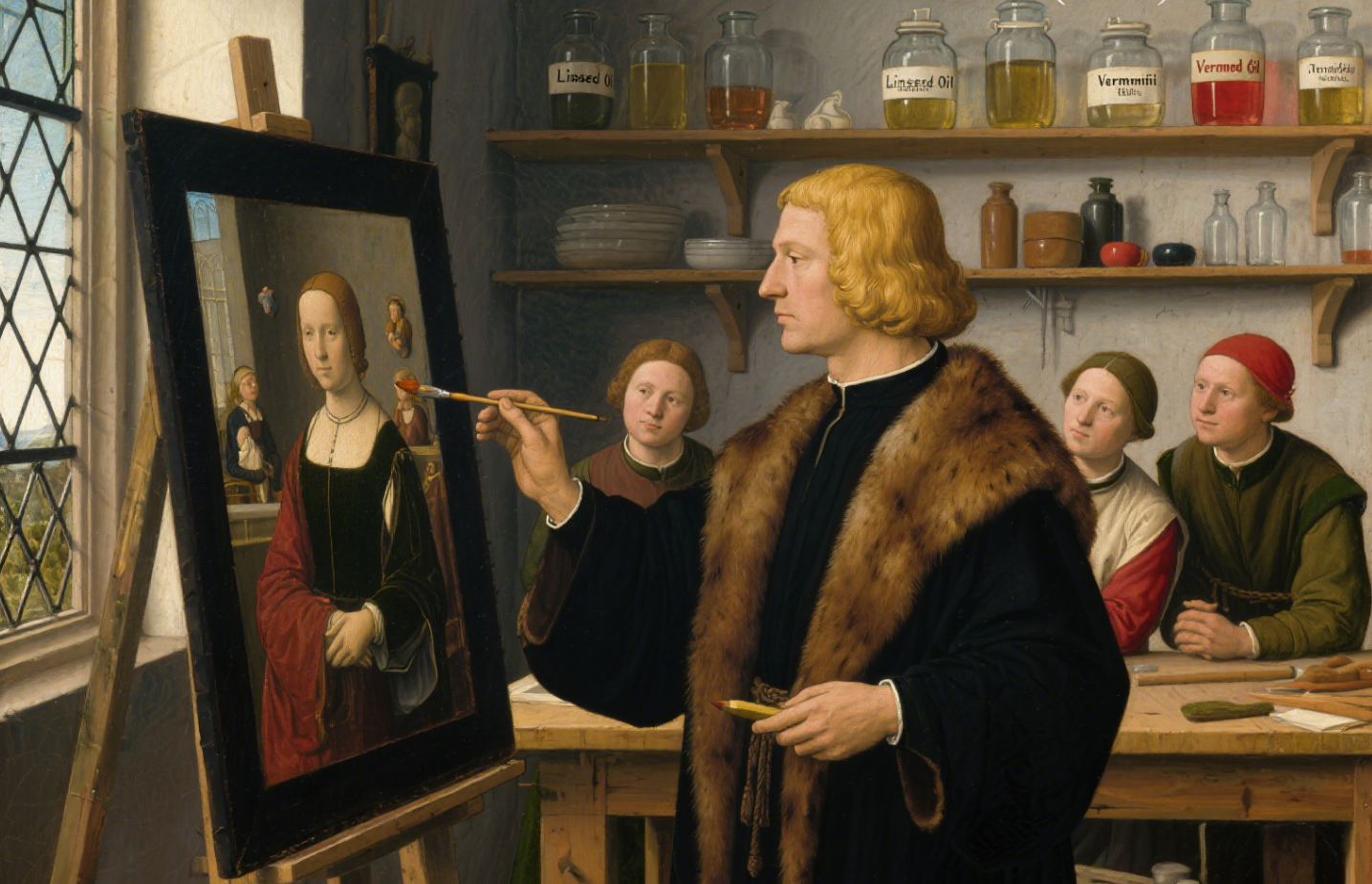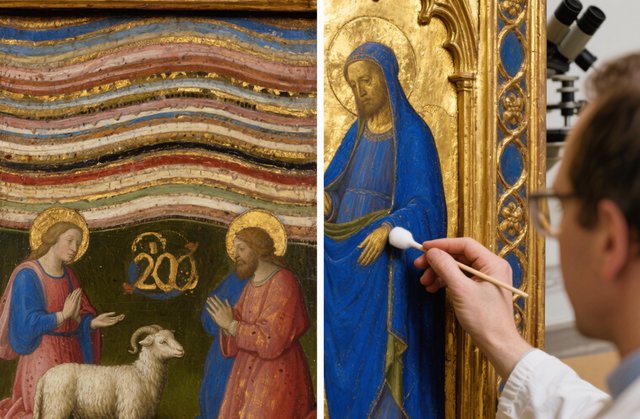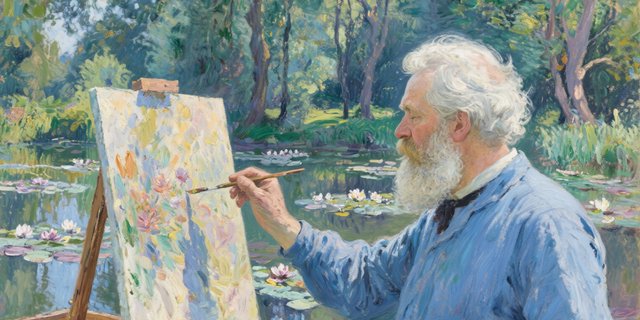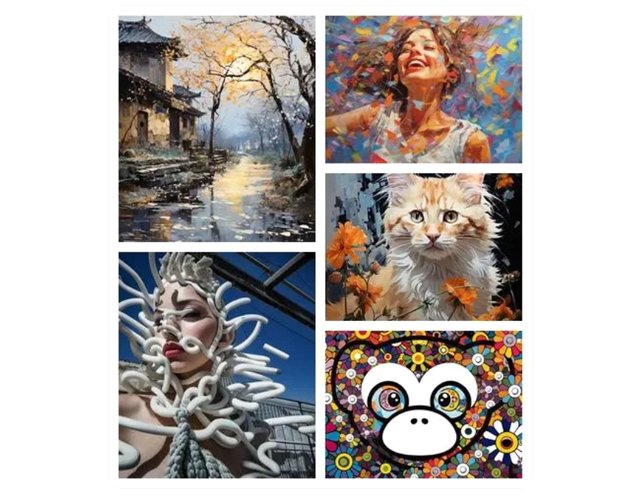Renaissance Oil Painting: 7 Masters Who Changed Art Forever (Their Iconic Works Unveiled)

The Renaissance (c. 14th–17th centuries) wasn’t just a “rebirth” of learning—it was a revolution in how we see art. Oil painting, once a niche medium, became the tool that turned flat, symbolic medieval art into lifelike, emotional masterpieces. Artists didn’t just paint scenes—they dissected anatomy, studied light, and invented techniques that still influence artists today. At theArtPaint, we’re breaking down the era’s defining oil painters, their landmark works, and the innovations that made Renaissance oil painting 不朽.
The Rise of Oil in the Renaissance: A Game-Changing Shift
Before the Renaissance, most art was done with tempera (egg-based paint) or fresco (pigments mixed with water on wet plaster). Both dried fast, limiting detail and depth. Then, Northern European artists—starting with the Flemish masters—unlocked oil’s potential: it dried slowly, letting them layer glazes (thin, transparent paint) to build rich color and realism.
By the 15th century, this technique spread to Italy, where artists merged oil with new ideas about perspective, anatomy, and human emotion. Suddenly, oil wasn’t just a medium—it was a way to mimic life itself.
7 Key Renaissance Oil Painters & Their Masterpieces
1. Jan van Eyck (c. 1390–1441): The “Father of Oil Painting”
A Flemish pioneer, van Eyck didn’t invent oil painting, but he perfected it. He layered 20+ glazes of oil to create unprecedented depth, making fabrics glow and skin look lifelike.
Masterpiece: The Arnolfini Portrait (1434). This intimate scene of a wealthy couple isn’t just a portrait—it’s a story. Oil lets van Eyck capture tiny details: the wife’s fur-lined gown, the mirror reflecting the room, even the dog’s soft fur. The signature “Jan van Eyck was here 1434” in the mirror proves oil’s permanence—this work still stuns 600 years later.
2. Leonardo da Vinci (1452–1519): The Scientist-Artist
Da Vinci merged art and science, using oil to create “sfumato”—a smoky, blended effect that makes edges soft (think of Mona Lisa’s smile). He studied optics to make light behave like it does in real life.
Masterpiece: Mona Lisa (1503–1519). Oil lets her skin shift from warm to cool, her eyes follow you across the room, and her smile look different from every angle. Da Vinci layered 30+ glazes of brown, pink, and yellow—no other medium could pull off this mystery.
3. Raphael (1483–1520): Harmony in Every Stroke
Raphael’s oil works are all about balance—soft colors, gentle poses, and perfect composition. He used oil to create serene scenes that feel “right,” even if you can’t say why.
Masterpiece: The School of Athens (1509–1511). Though a fresco, his oil studies for this work (now in the Louvre) show his genius. He used oil to test light on Plato and Aristotle’s robes, ensuring the final mural’s harmony. His oil sketches reveal how he mixed soft blues and golds to make the scene feel timeless.
4. Titian (c. 1488–1576): The King of Color
An Italian master, Titian loved bold, vibrant oil paints. He used impasto (thick, textured strokes) for drama and glazes for depth, making his works feel alive with movement.
Masterpiece: Diana and Actaeon (1556–1559). Oil lets Titian make Diana’s silver dress shimmer, the water ripple, and the tension in the scene—Actaeon catching the goddess off-guard—palpable. He mixed rich reds (from cochineal bugs) and deep greens (verdigris) to make the forest feel lush and wild.
5. Hans Holbein the Younger (1497–1543): Portraits with Personality
Holbein, a German artist in England, used oil to capture not just looks, but character. His portraits of kings and nobles feel like windows into their souls.
Masterpiece: The Ambassadors (1533). This double portrait uses oil to show every thread in their velvet robes and every tool on their desk (a nod to Renaissance learning). The distorted skull at the bottom? Only visible from the side—proof oil could handle tricky perspectives.
6. Caravaggio (1571–1610): Drama in Light and Shadow
Caravaggio invented “tenebrism”—extreme contrast between light and dark—using oil to make figures pop from black backgrounds. His works feel like theater, with oil amplifying the drama.
Masterpiece: The Calling of St. Matthew (1599–1600). Oil lets him make the beam of light that hits Matthew glow, while the rest of the room stays in shadow. The thick, dark oil (mixed with lamp black) makes the moment—Christ summoning Matthew—feel urgent, like it’s happening now.
7. Rembrandt van Rijn (1606–1669): Emotion in Every Glaze
A Dutch master, Rembrandt used oil to paint the human condition—joy, sorrow, aging. He layered glazes to make skin look lived-in, with wrinkles and flaws that feel real.
Masterpiece: The Night Watch (1642). This massive oil painting uses thick impasto for the militia’s shiny armor and thin glazes for the dark background. Rembrandt mixed oil with ash to add texture, making the scene feel chaotic and alive—like a snapshot of a busy day.
Renaissance Oil Techniques That Changed Art
Glazing: Layering thin, transparent oil to build depth (van Eyck’s signature move).
Sfumato: Blending oil to soften edges (da Vinci’s Mona Lisa trick).
Impasto: Thick, textured oil strokes for drama (Titian and Rembrandt).
Tenebrism: Extreme light-dark contrast (Caravaggio’s theater-like effect).
These techniques weren’t just “tricks”—they let artists say more with their work. A Renaissance oil painting isn’t just a picture; it’s a conversation about life, faith, and what it means to be human.
How to Spot a Renaissance Oil Painting
Detail: Look for tiny, realistic touches—fur, fabric folds, or reflections (van Eyck’s mirror!).
Color depth: Rich, layered hues (not flat) from glazes.
Light: Natural, not harsh—like sunlight through a window.
Emotion: Figures have human expressions, not stiff poses.
Pro tip: Visit a museum with Renaissance works (the Louvre, Uffizi, or National Gallery). Stand close—you’ll see brushstrokes and glaze layers no print can 复制.
Table: Renaissance Masters at a Glance
| Artist | Nationality | Key Technique | Iconic Oil Work | Why It Matters |
|---|---|---|---|---|
| Jan van Eyck | Flemish | Glazing (20+ layers) | The Arnolfini Portrait | Perfected oil as a fine art medium |
| Leonardo da Vinci | Italian | Sfumato (soft edges) | Mona Lisa | Merged art and science in oil |
| Titian | Italian | Impasto (thick strokes) | Diana and Actaeon | Elevated color and movement |
| Caravaggio | Italian | Tenebrism (light/shadow) | The Calling of St. Matthew | Revolutionized dramatic storytelling |
The Renaissance proved oil painting wasn’t just about making art—it was about understanding life. These masters used oil to ask big questions: What does beauty mean? How do we capture emotion? Their answers, preserved in oil, still resonate.
At theArtPaint, we believe studying these works isn’t just history—it’s inspiration. Ready to dive deeper? Explore our guide to “Renaissance Oil Techniques You Can Try at Home” or plan a museum tour of these masterpieces.
theArtPaint.com—where the Renaissance lives on.




